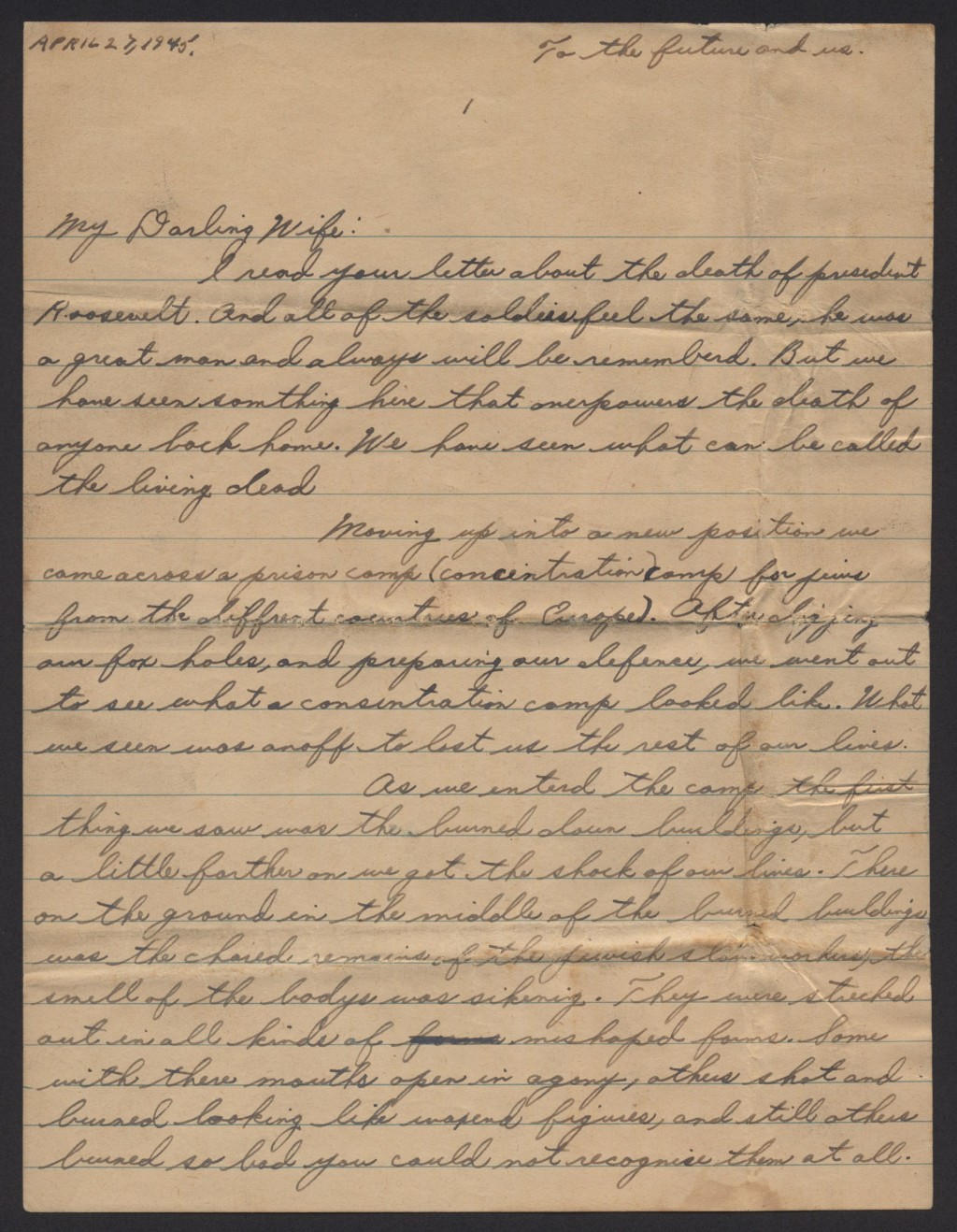
Aaron A. Eiferman, a member of the 12th Armored Division, wrote this letter to his wife in the United States. Writing "We have seen what can be called the living dead," he describes his experiences as the 12th overran a Dachau subcamp in the Landsberg area on April 27, 1945.
APRIL 27, 1945.
To the future and us.
My Darling Wife:
I read your letter about the death of president Roosevelt and all of the soldiers feel the same, he was a great man and always will be remembered. But we have seen something here that overpowers the death of anyone back home. We have seen what can be called the living dead.
Moving up into a new position we came across a prison camp (concentration camp for jews from the different countries of Europe). After digging our fox holes, and preparing our defence, we went out to see what a concentration camp looked like. What we seen was enough to last us the rest of our lives.
As we entered the camp, the first thing we saw was the burned down buildings, but a little farther on we got the shock of our lives. There on the ground in the middle of the burned buildings was the charred remains of the jewish slave workers, the smell of the bodys was sickening. They were stretched out in all kinds of mishaped forms. Some with there mouths open in agony, others that and burned looking like waxend figures, and still others burned so you could not recognise them at all.
Why are letters like this one important historical evidence?
How do artifacts, documents, and images enhance our understanding of the events of the Holocaust?
How does this letter help illustrate what US soldiers perceived as they encountered concentration camps, mass graves, and other sites of Nazi crimes?
We would like to thank Crown Family Philanthropies, Abe and Ida Cooper Foundation, the Claims Conference, EVZ, and BMF for supporting the ongoing work to create content and resources for the Holocaust Encyclopedia. View the list of donor acknowledgement.